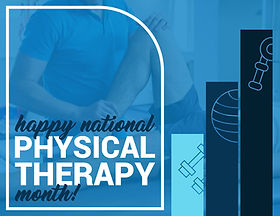Vitamin D & Arthritis
- Arthritis & Sports
- Apr 26, 2021
- 3 min read
Updated: Feb 6

Spring is finally here, and with that comes warmer weather. While the warmth from the sun can feel very soothing, did you know it can also help keep you and your bones healthy?
How can the sun, something so far away, improve our bone health?
Vitamin D! Also known as the "sunshine vitamin", vitamin D promotes calcium absorption in our bones - and we all know how calcium helps build a strong body (thank you, "Got Milk" campaign).
Dr. Randall Peyton, Northern Virginia's leading joint replacement orthopedic surgeon, understands the importance of bone health. "Vitamin D is essential to bone health, among other things, because it promotes calcium absorption," says Dr. Peyton. "Inadequate calcium significantly contributes to the development of osteoporosis and osteopenia, which are very prevalent in my patients who are candidates for elective joint replacement surgery."
Why is it so bad to have low vitamin D levels?
Vitamin D is a nutrient you need for good health. Vitamin D regulates as many as 1,000 different genes. Together with calcium, it helps the body prevent osteoporosis, a disease that leads to the weakening of bones. It also helps maintain a healthy immune system and activates cells that fight invading viruses and bacteria.
Unlike other vitamins, vitamin D is not just a simple nutrient. It's also an active steroid hormone that binds to receptors in a host of vulnerable tissues – including the joints affected by arthritis – and works to keep these tissues healthy.
Arthritis patients may be even more likely than the general population to have low levels of vitamin D, which can have a dramatic effect on their symptoms. “I have found that people with arthritis have a greater degree of pain when they have a low vitamin D level", Dr. Peyton comments. "Luckily, once their vitamin D levels are restored, their arthritis pain typically decreases."
So just how much vitamin D do you need?
The amount of vitamin D you need each day depends on your age, according to the National Institute of Health. As we get older, the daily recommended amount of vitamin D increases:
Birth to 12 months: 10 micrograms
Age 1-70 years: 15 micrograms
Age 71+: 20 micrograms
At these recommended levels, many Americans (around 60%) are deficient in this essential vitamin. Dr. Peyton comments, “I have found that up to 75% of our patients are deficient in vitamin D.”
Am I getting enough vitamin D?
The easiest way to tell if you're getting enough vitamin D is to take a blood test. This will look for a form of vitamin D in your blood called 25-hydroxyvitamin D, and can be shown in nanomoles per liter (nmol/L) or nanograms per milliliter (ng/mL).
Levels below 30 nmol/L or 12 ng/mL: low (deficient)
Levels of 50 nmol/L or 20 ng/mL and above: adequate
Levels above 125 nmol/L or 50 ng/mL: too high
How can I get more vitamin D?
The most natural way to get your daily dose of vitamin D is from sun exposure. To maintain healthy levels, it is recommended to get 10-30 minutes of midday sunlight several times per week (make sure you are applying sunscreen to help prevent sunburns and skin cancer).
There are several factors that could change this. The time of day, cloud cover, season, and how far you live from the equator can all have an impact on the amount of UV rays you are exposed to. Due to the way our skin absorbs sunlight, people with darker skin may need a little more time than this.
While the sun is a great source of vitamin D, certain foods provide small amounts of vitamin D as well. These include most U.S. milk supplies and breakfast cereals, which are fortified with vitamin D; fatty fish, like trout and salmon; cheese and egg yolk; and some mushrooms.
Vitamin D is essential in the prevention of osteoporosis. If you suffer from low vitamin D levels, or want to start working to prevent it, we’re here to help! We invite you to schedule an appointment with our nutritionist by calling us at 703.349.5100 or clicking here to request an appointment. To stay up-to-date on the latest news and tips from us, be sure to follow us on Facebook and Instagram, and sign up for our monthly newsletter!


























